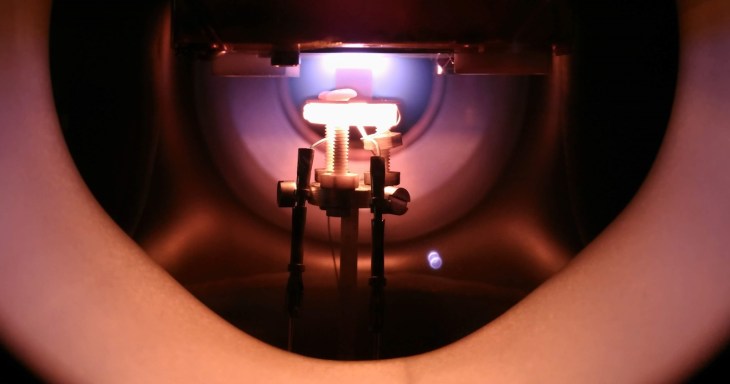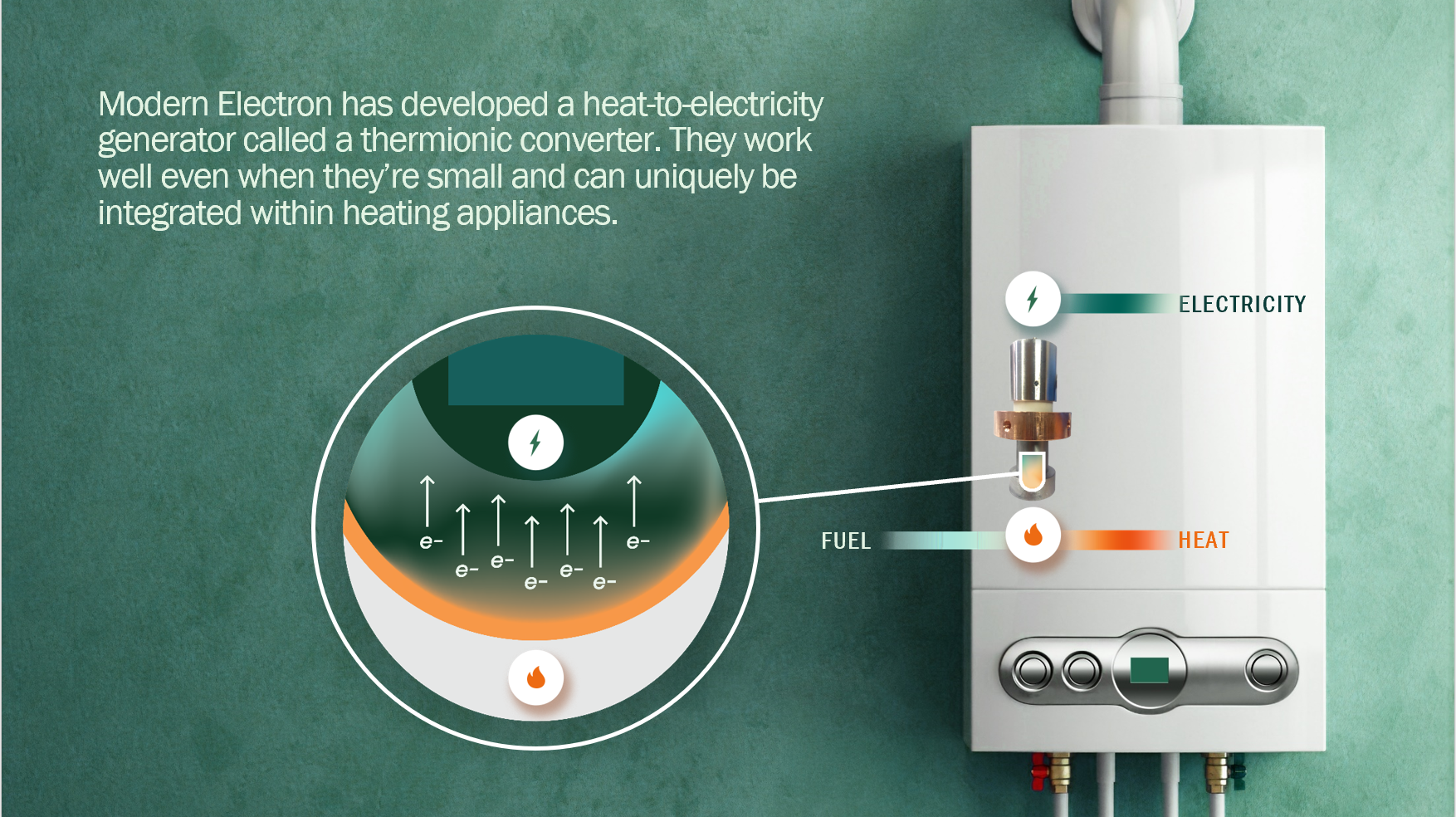A huge amount of energy use on our planet goes toward creating heat, and not only that, but a large amount of that energy is wasted and byproducts like CO2 blasted into the atmosphere. Modern Electron could change that with a new system that captures the emissions and produces clean hydrogen, right inside a home or building, and $30 million in Series B funding will power its upcoming push to become a household name.
Natural gas is the most common way houses, apartment buildings and offices create heat. It’s a pretty simple process: you burn the gas, it produces heat, carbon dioxide and water. The heat is piped in, the other stuff is piped out.
But as Modern Electron co-founder and CEO Tony Pan explained, this may be convenient, but it’s not ideal (though admittedly it’s much better than oil and coal).
“If you’re burning fuel just for heat, from a physics standpoint it’s very wasteful,” he said. “If you were burning natural gas or coal or biofuels in a power plant, you’d be generating electricity first, because electricity has about four times the value of heat. The reason we don’t do that is you can’t scale down power plant tech to the level of a commercial or residential building. This loss has been known about for a century — if you can generate heat and electricity, it’s like a holy grail.”
By combining two new technologies, though, Pan hopes to achieve something like that holy grail.
The first technology is called a thermionic converter, and it’s what the Seattle-area Modern Electron made its first pitch on. The size of a soda can, it’s a compact and efficient heat to energy converter, which takes the heat produced by a furnace and turns it into electricity.
The second, which is still under development but about to make its debut, is what they’re calling the Modern Electron Reserve, which rather than burning natural gas — which is mostly CH4, or methane — reduces it to solid carbon (in the form of graphite) and hydrogen gas. The gas is passed on to the furnace to be burned, and converted to both heat and energy, while the graphite is collected for disposal or reuse.
You may be, as I was, suspicious that introducing a number of conversions and processes here would have a serious effect on the efficiency of the whole system, thermodynamically speaking.
“There’s no free lunch, it’s true,” Pan said. “In order to not release CO2 into the atmosphere, we don’t have that exothermic reaction [i.e. burning the gas]. But if you use it for heat and power, since power is more valuable than heat, you can economically come out even. You sort of subsidize the extra cost.”
In fact, users shouldn’t see any uptick in gas use at all — the energy that normally would have escaped your home in other forms stays in the system to the extent that your electricity needs should be covered easily.
As for the carbon this reaction produces, it requires something of a shift in thinking. Right now, heat is kind of magic. You turn it on, the house heats up and you get a bill. But if you’re using a system equipped with Modern Electron’s tech, then you’re going to end up with a kilogram or two of of graphite — pure carbon dust — every day. (That’s about a liter, or a dustpan full.)

A pile of graphite — and yes, your furnace shoots this into the atmosphere every day. Image Credits: Modern Electron
“Gross,” you might think, “I just have to throw this stuff away?” Well, the fact is you’ve been throwing it away the whole time — into the atmosphere. Pan called it the “giant dump in the sky,” and it’s where we’ve been putting our carbon since the very beginning. Now you can just see your carbon footprint more conveniently (but try not to spill it).
This pure carbon dust isn’t what you’d call toxic, being essentially pencil shavings. As a solid, it actually is an effective sequestration of the carbon for a few hundred or thousand years even if it’s sitting in a dump somewhere. Furthermore, facilities like offices or hospitals that use a lot of heat would probably produce enough carbon solids, and at locations convenient enough for pickup, that it could be sold on to industries that can use it.
Modern Electron isn’t looking to replace your whole heating and electricity stack, though; for one thing, Pan pointed out, in the summer when a home needs very little heat, it will generate a correspondingly small amount of power. (Incidentally, the system would require some modification of most electrical systems for grid flexibility, but not an overhaul.)
It’s all about decarbonization of whatever heat you do use, and hopes to integrate with existing HVAC providers rather than reinvent the wheel. Its thermionic converter fits right in with no increase in volume, and the gas to hydrogen converter won’t take up more space than any other small appliance. Pan said that there is a huge opportunity to decarbonize not just homes, but buildings big enough to be major consumers of gas but not big enough to use the large-scale industrial infrastructure or even fuel cell tech like Bloom’s. That includes medium-size industry with high heat requirements and things like steam production.
The timing is good — the EU will soon require new furnaces and boilers to be hydrogen-compatible (and old ones can be converted fairly easily), yet there is no sign of a global hydrogen economy on the scale that would be needed in order to switch from natural gas. Converting it on site with little or no loss, and considerable benefits, might be the new default for heating hundreds of millions of buildings. Not a bad place to be, startup-wise, which is probably why the company has attracted continued investment.
The $30 million B round had new investors in At One Ventures, the fund co-founded by former Google X head Tom Chi, along with Extantia, Starlight Ventures, Valo Ventures, Irongrey and Wieland Group. Previous investors Bill Gates (the man, not the foundation) and MetaPlanet also continued and expanded their investment.
The funding will go toward continued product development and the upcoming pilot tests with big HVAC OEMs, which Pan said should be up and running in the next year. They’re also hiring, he added, especially in the Seattle area.
If Modern Electron’s tech becomes mainstream, and the trend away from oil and coal continues, it could make natural gas a much cleaner and more viable complement (and one already with a heavy global presence) to renewables like solar and wind.


